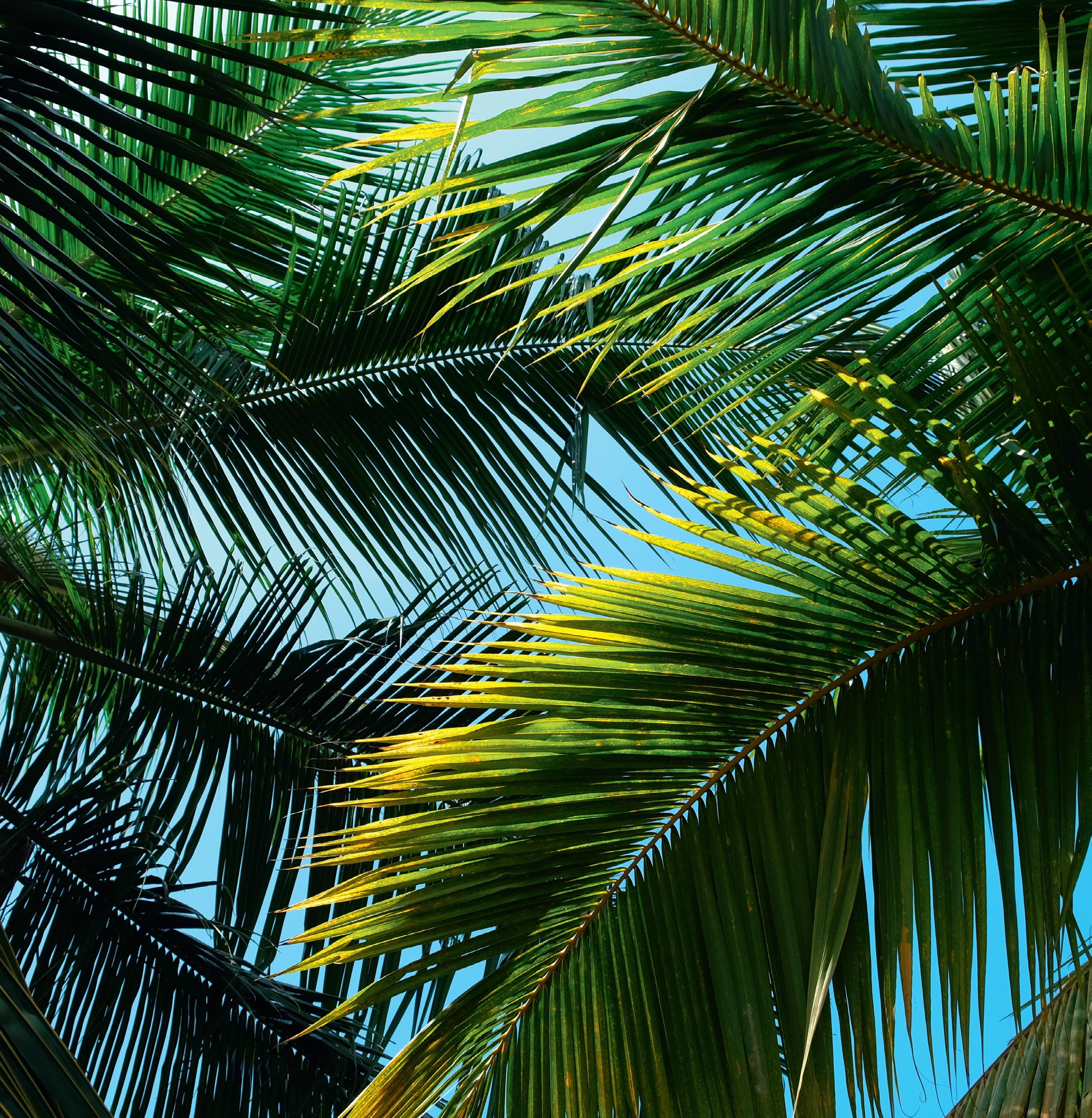HUMAN AND SOCIAL BIOLOGY
Anne Tindale
Reviewer: Shaun deSouza
Section A Living organisms and the environment


The topics covered in this section are:
• Living organisms
• Cells
• Movement of substances into and out of cells
• Photosynthesis

• Food chains, food webs and cycles

1 Living organisms and cells
All living organisms are made of cells. Cells are so small that they can only be seen with a microscope and not with the naked eye. From the simplest unicellular organisms to the most complex multicellular organisms, living organisms all share certain characteristics.
Living organisms
Learning objectives
• Describe the characteristics of living organisms.
The characteristics of living organisms
All living organisms share seven characteristics: nutrition, respiration, excretion, growth, irritability, movement and reproduction.
Nutrition (feeding)
Nutrition is the process by which living organisms obtain or make food.
All living organisms need food to provide them with the energy and the materials they need to build their bodies and carry out other life processes. Animals take in ready-made food and are called heterotrophs. Plants make their own food by the process of photosynthesis and are called autotrophs
Respiration
Respiration is the process by which energy is released from food by all living cells.
All activities occurring in an organism’s body require energy, and two different types of respiration can occur in living cells to provide this energy. Aerobic respiration requires oxygen and takes place in most cells. Anaerobic respiration takes place without oxygen in certain cells.
Excretion
Excretion is the process by which waste and harmful substances, produced by the body’s metabolism (chemical reactions), are removed from the body.
Chemical reactions occurring in living organisms produce waste and harmful substances which must be removed from the organisms’ bodies to prevent them from building up and poisoning body cells.
Growth
Growth is a permanent increase in the size and complexity of an organism. In order to grow, the number of cells in the bodies of multicellular organisms increases by the cells dividing. Newly formed cells then increase in size by making more cellular materials such as proteins. Animals grow to a certain size and then stop growing. Plants grow throughout their lifetime.
Irritability (sensitivity)
Irritability is the ability of organisms to detect and respond to changes in their environment or within themselves.
Living organisms must be able to constantly detect changes in their environment, known as stimuli, and respond appropriately in order to help them survive. Animals have specialised sense organs to detect
stimuli and their responses are generally quick. Plants lack specialised sense organs and their responses are generally much slower; for example, shoots respond to light by growing and bending towards it.
Movement
Movement is a change in the position of a whole organism or of parts of an organism. Most animals can move their whole bodies from place to place, known as locomotion. Plants and some animals can only move parts of their bodies; for example, the opening and closing of flowers, the ‘feeding’ movements of the Venus fly trap and the movements of the tentacles of coral polyps and limbs of barnacles.
Reproduction
Reproduction is the process by which living organisms generate new individuals of the same kind as themselves.
There are two types of reproduction. Sexual reproduction requires two parents and involves the fusion of sex cells or gametes produced by the parents. Asexual reproduction requires only one parent and does not involve the fusion of gametes.
Recalling facts
List the SEVEN ways you can tell if something is living.
Define EACH of the following:
a irritability
b respiration
c nutrition.
Name the TWO types of reproduction and distinguish between them.
What is excretion and why is it important to living organisms?
Applying facts
Your friend Jared says that he thinks aeroplanes are alive. Explain THREE reasons why he might have come to this conclusion and THREE reasons you can give to him to try and convince him that he is incorrect.
a Give a named example of an autotroph and a named example of a heterotroph.
b Explain TWO ways in which you would expect an autotroph to differ from a heterotroph.
If you blow up a balloon and put it close to a heater, it increases in size. Is the balloon growing in a biological way? Explain your answer.
Suggest TWO reasons why most animals need to move their whole bodies but plants only need to move parts of their bodies.
Which of the seven characteristics of living organisms would Ariella, a tennis player, be displaying during a tennis match? Explain EACH named characteristic as it relates to Ariella during her match.
Cells
Learning objectives
• Compare the structures of unspecialised animal and plant cells, and selected microbes
• State the functions of cell structures and organelles
• Relate the structure of selected specialised cells to their functions.
• Explain the importance of cell specialisation in humans.
An introduction to cells
A cell is the smallest unit of life. It is the basic structural and functional unit of all living organisms. Some organisms are composed of a single cell only and are known as unicellular organisms, whilst others are composed of many cells and are known as multicellular organisms
Animal and plant cells
Both animal and plant cells are surrounded by an extremely thin outer layer known as the cell membrane, which has jelly-like cytoplasm inside. The cytoplasm contains structures known as organelles, which are specialised to carry out one or more vital functions. Most organelles are surrounded by one or two membranes. Examples of organelles include the nucleus, mitochondria, endoplasmic reticulum, ribosomes, chloroplasts and vacuoles. Whilst cells can be seen under a light microscope, the detailed structure of the organelles can only be seen under an electron microscope
Certain components are found in both animal and plant cells. These include the following:
• a cell membrane or plasma membrane
• cytoplasm
• a nucleus
• mitochondria (singular: mitochondrion)
• endoplasmic reticulum
• ribosomes.
In addition to the above, plant cells also possess the following:
• a cell wall
• chloroplasts
• a large vacuole.
Figure 1.1 shows the structure of a generalised animal cell and Figure 1.2 shows the structure of a generalised plant cell. The structures and functions of the various components of these cells are summarised in Table 1.1, and Table 1.2 compares the structures of animal cells and plant cells.
ribosomes cell membrane
cytoplasm
nuclear envelope nucleoplasm chromatin thread nucleolus
nucleus

rough endoplasmic reticulum
smooth endoplasmic reticulum
mitochondrion
vacuoles
Cell membrane
cell wall
cell membrane
chloroplast
ribosomes
mitochondrion
vacuole
vacuole membrane
rough endoplasmic reticulum
nucleus
cytoplasm
smooth endoplasmic reticulum
A partially (differentially) permeable layer composed of protein and lipid around the outside of the cell.

Cytoplasm A jelly-like substance composed of about 80% water and 20% dissolved substances, especially protein.
Nucleus Surrounded by a double membrane called the nuclear envelope. Contains nucleoplasm and chromatin threads which condense to form chromosomes during cell division. Chromosomes contain genetic information in the form of DNA (see page 198).
Mitochondrion A rod-shaped organelle with a smooth outer membrane and folded inner membrane. Contains respiratory enzymes
Endoplasmic reticulum
A network of tubules throughout the cytoplasm. Rough endoplasmic reticulum has ribosomes attached; smooth endoplasmic reticulum lacks ribosomes.
Ribosome A small spherical organelle.
• Controls what substances enter and leave the cell.
• Supports the organelles.
• The site of many chemical reactions.
• Essential for cell division.
• DNA controls the characteristics and functioning of the cell.
• Where aerobic respiration occurs to release energy for the cell.


• Transports substances throughout the cell.
• Where proteins are synthesised (produced) from amino acids.




Cell component Structure Function
Vacuole A membrane-bound compartment.
• In an animal cell, vacuoles may contain water, food, cell secretions or waste products.
• In a plant cell, a single large vacuole contains cell sap, a solution of sugars, mineral salts, amino acids and waste products.
Cell wall A freely permeable wall made of cellulose which surrounds the cell membrane of plant cells.
Chloroplast A disc-shaped organelle surrounded by a double membrane. Contains many internal membranes, the green pigment called chlorophyll and photosynthetic enzymes.
Table 1.2 Plant and animal cells compared
Animal cells
• Stores food, cell secretions or cell waste.
• Supports the plant cell when turgid.
• Supports and protects the plant cell and gives it shape.
• Where photosynthesis occurs to produce food for the plant.
Plant cells
Do not have a cell wall. Have a cell wall which is made of cellulose. Do not have chloroplasts or chlorophyll. Usually have chloroplasts which contain chlorophyll
When present, the vacuoles are small and scattered throughout the cytoplasm and their contents vary.
Usually have one large, central vacuole which contains cell sap.
May contain glycogen granules as a food store. May contain starch grains as a food store.
Can have a great variety of shapes. Have a regular shape, usually round, square or rectangular.


Microbes
Microbes or microorganisms are extremely small organisms which include viruses, bacteria, protozoa and some fungi. Many microbes are pathogens, meaning that they cause disease (see page 232).
Viruses
proteins
viral envelope – contains lipids and proteins
nucleic acid strands – contain genetic information


capsid – protein shell enclosing the nucleic acid strands
Viruses do not have a cell membrane, cytoplasm or the organelles that are found in plant and animal cells, and for this reason they are considered to be particles and not cells. Each virus particle is composed of nucleic acid (DNA or RNA) surrounded by a protective coat of protein called a capsid. Some also have a viral envelope around the capsid that can have spikes made of protein on it. All viruses live parasitically inside other living cells, and they can only reproduce inside other living cells. The structure of a typical virus particle is shown in Figure 1.3.
Bacteria
Bacteria are unicellular organisms. Each bacterial cell possesses a cell membrane and cytoplasm, but lacks a true nucleus and other membrane-bound organelles. The cell membrane is surrounded by a cell wall made of a material called murein and the cytoplasm contains ribosomes. The DNA of bacterial cells exists in a region called the nucleoid, which lacks a nuclear membrane, and also in smaller regions called plasmids. Some bacteria possess flagella to help them move. The structure of a generalised bacterium is shown in Figure 1.4.
capsule – slimy outer covering found in some bacteria. Protects the cell
cell wall
cell membrane
nucleoid – a single, long, coiled loop of DNA. Controls all cellular activities
cytoplasm
ribosome
plasmid – small, circular piece of DNA
flagellum – long, whip-like projection Aids in movement
Fungi include moulds, mushrooms, toadstools and yeasts. Most fungi are multicellular, though yeasts are unicellular. Their cells possess cell membranes, cytoplasm, true nuclei and other membranebound organelles, except chloroplasts, which are never found in fungal cells. The cell membranes are surrounded by cell walls made of chitin. In multicellular fungi the cells form thread-like branching filaments called hyphae. The hyphae of many species are divided into individual cells by cross walls called septa. However, the hyphae of some species, such as pin mould, lack septa so their cells are long and contain many nuclei. A network of hyphae, known as a mycelium, makes up the body of the fungus. The structure of pin mould is shown in Figures 1.5 and 1.6.
spores – used for reproduction

spore case
hypha – thread-like branching structure composed of many cells, or a single cell with many nuclei and a central vacuole. Surrounded by a cell wall
mycelium – body of the fungus made up of a network of hyphae
cell wall – made of chitin





nucleus mitochondrion
cytoplasm
vacuole


ribosome
Cell specialisation and organization in humans
The human body is composed of trillions of cells. Most of these cells are of different types due to them becoming specialised or differentiated to carry out specific functions. Whilst specialised cells all have the same basic components, their shapes and structures are different.
Cell specialisation is important because it enables the specialised cells to be better able to carry out their specific functions, which then enables humans to carry out all essential life processes as efficiently as possible. Figures 1.7 to 1.12 show specialised cells found in the human body and Table 1.3 summarises their distinguishing features and functions.
cell membrane
cytoplasm nucleus
basement membrane
follicle cells – act as protection
membrane layer of jelly
cytoplasm – contains yolk which supplies nutrients to the newly formed embryo
nucleus
dendrites
head middle piece tail – for swimming nucleus
acrosome – contains enzymes to dissolve a passage into the ovum

mitochondria – supply energy for swimming
nucleus
cell body axon – nerve bre Carries impulses
synaptic knobs – pass nerve impulses to a muscle
myelin sheath – fatty layer Insulates the axon
cell membrane oval nucleus projections of cytoplasm
Cell type Distinguishing features
Epithelial cells
Cells can be cuboidal, columnar or flattened in shape, and are arranged in sheets which may be one to several cells thick.

Sperm cell or spermatozoon

Egg cell or ovum
Nerve cells or neurones
Muscle cells
Consists of a head containing the nucleus, a middle section containing many mitochondria and a tail.
Spherical in shape with cytoplasm that contains yolk. Surrounded by a membrane, a layer of jelly and a layer of follicle cells.
Long, thin cells with a cell body that has one or two thin nerve fibres containing cytoplasm extending from it.
Cells may be narrow and spindle-shaped, each with a single nucleus, or long and cylindrical with cross bands and many nuclei (see pages 127 to 128).
Function
• Sheets of cells cover and often protect inner and outer surfaces of the body.
• The male gamete (sex cell), which fuses with the female gamete during fertilisation to form a zygote.
• The female gamete, which fuses with the male gamete during fertilisation to form a zygote.
• Transmit impulses throughout the body to control and coordinate the functioning of the body.
• Groups of muscle cells, working together, contract to cause movement of parts of the body.
Connective tissue cells
Cells may be of several different types. The most common are fibroblasts, which are elongated cells with projections from their ends.
• Produce the extracellular material known as the extracellular matrix of connective tissue (see page 10).
Cells of the same type that are specialised to carry out a particular function work together in groups called tissues. Different tissues are then grouped together to form specialised organs which may perform one or more specific functions. Organs work together in organ systems to carry out a major function. All organ systems then work together in an organised way to form an organism
i.e. cells tissues organs organ systems organism
Tissues
Tissues are groups of cells that have a similar structure and that work together to perform a specific function.
Tissues usually contain one type of cell; however some may contain more than one type. There are four main types of tissues in the human body: epithelial, nervous, muscle and connective tissue.
• Epithelial tissue is composed of sheets of epithelial cells that cover and often protect inner and outer surfaces of the body; for example, it lines blood vessels and airways of the respiratory system, and forms the outer layers of the skin.





• Nervous tissue is composed of nerve cells that conduct nerve impulses throughout the body.









• Muscle tissue is composed of muscle cells that contract to bring about movement in the body.









• Connective tissue is composed of different types of connective tissue cells surrounded by an extracellular matrix. This matrix is made up of a jelly-like ground substance that usually contains fibres made of protein. The protein is normally collagen, though some fibres are made of elastin. Connective tissue binds together, protects and supports other tissues and organs in the body. There are several types of connective tissue.




Areolar (loose connective) tissue holds organs in place and attaches epithelial tissue to other underlying tissues; for example, it attaches the skin to the muscles beneath.


Adipose (fat) tissue is composed of spherical fat cells containing fat droplets. It is found under the skin and around organs. It insulates the body, serves as a food reserve and protects the body by acting as padding.


Blood tissue is composed of red blood cells, white blood cells and platelets surrounded by plasma. It transports various substances around the body and helps fight diseases (see pages 98 to 100).
























Fibrous connective tissue makes up tendons that attach muscles to bones, and ligaments that attach bones together at joints.
Cartilage tissue and bone tissue form the skeleton of the body, which supports and protects the soft body parts (see pages 124 to 125).
